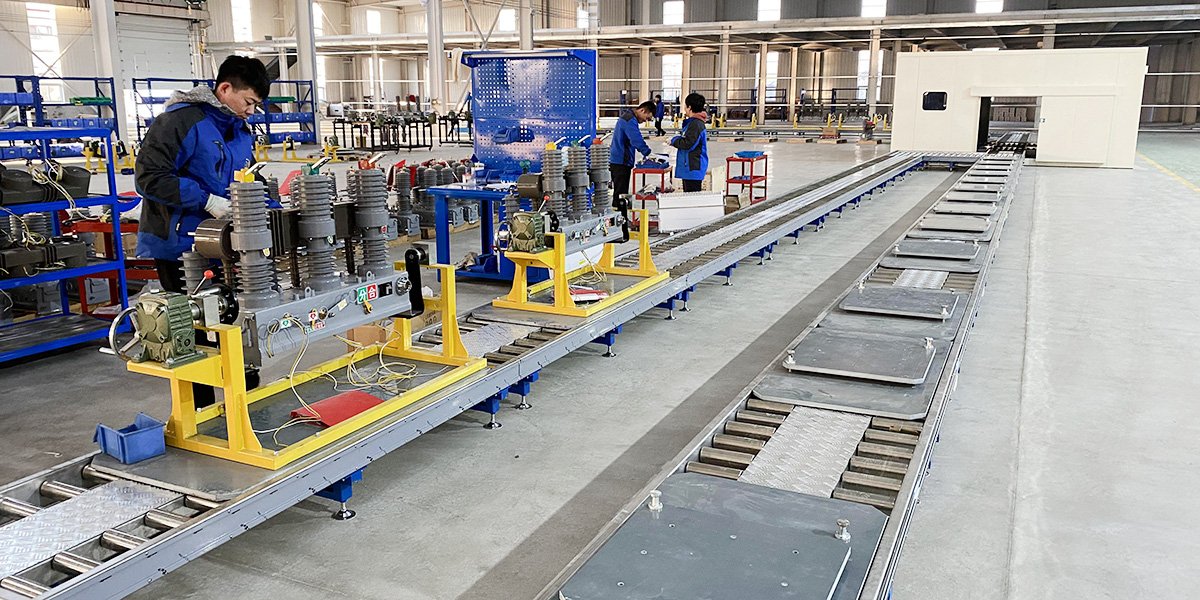Electrical Circuit Breaker Manufacturing Line

The production line for electrical circuit breakers is an automated system specifically designed for manufacturing and assembling these critical protective devices for power systems. Circuit breakers play a vital role in electrical safety by automatically interrupting the current in the event of an overload or short circuit, thereby protecting electrical equipment and wiring from damage.
The production line typically involves multiple stages, from the preparation and processing of raw materials to the final testing and packaging of the finished product. Initially, raw materials such as metal sheets are cut and stamped to form the enclosure and internal components of the circuit breaker. These parts are then welded, assembled, and fitted with necessary electronic and mechanical components, including contacts, springs, and tripping mechanisms.
During the assembly process, the production line may utilize automated robotic arms, conveyor belts, and fixtures to ensure precision and efficiency in assembly. Additionally, the line is equipped with testing equipment for real-time monitoring of the assembled circuit breakers to guarantee compliance with quality standards.
After assembly, the circuit breaker products enter the testing phase. Here, each unit undergoes a series of functional and electrical performance tests, such as breaking capacity and voltage withstand tests, to verify its performance and safety. Only products that pass all tests are packaged and prepared for shipment.
The design of the electrical circuit breaker production line aims to enhance production efficiency, reduce labor costs, and ensure the consistency and reliability of the products. By employing advanced automation technology and precise testing methods, the production line can steadily produce high-quality circuit breakers that meet industry standards and customer requirements.
